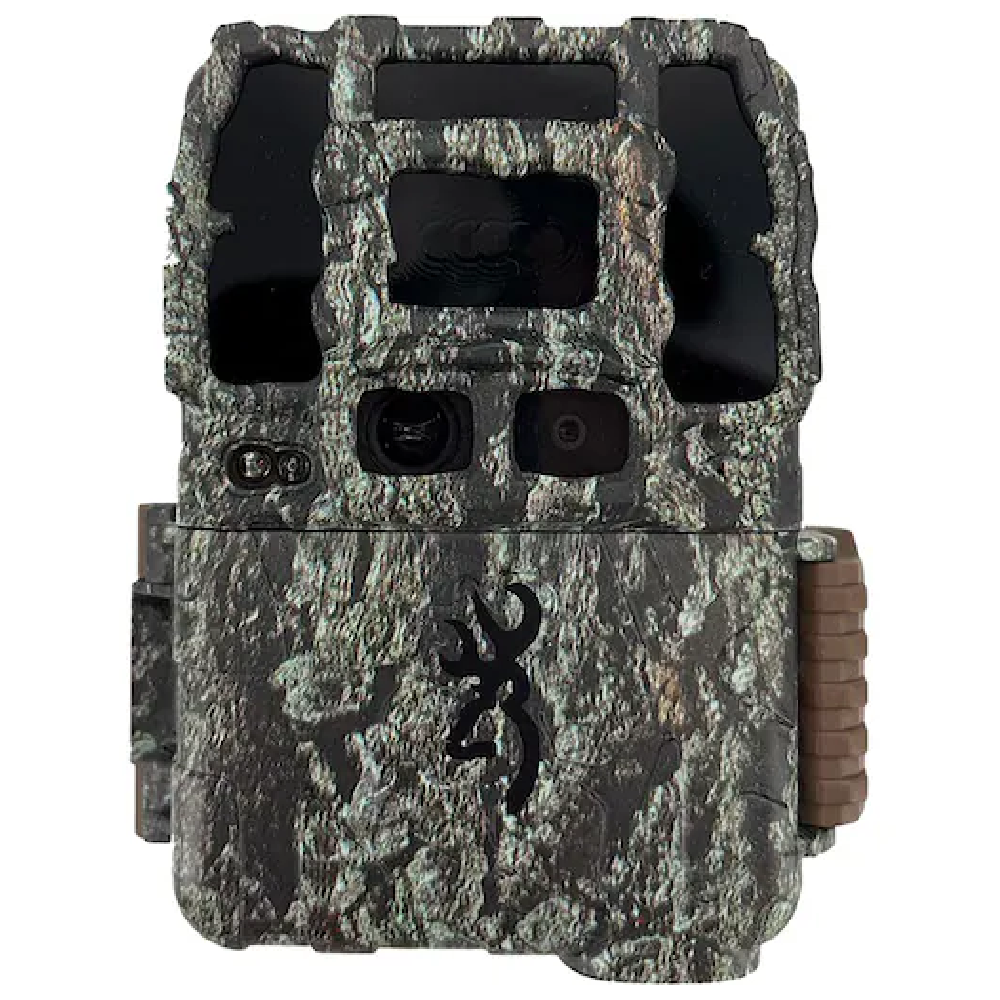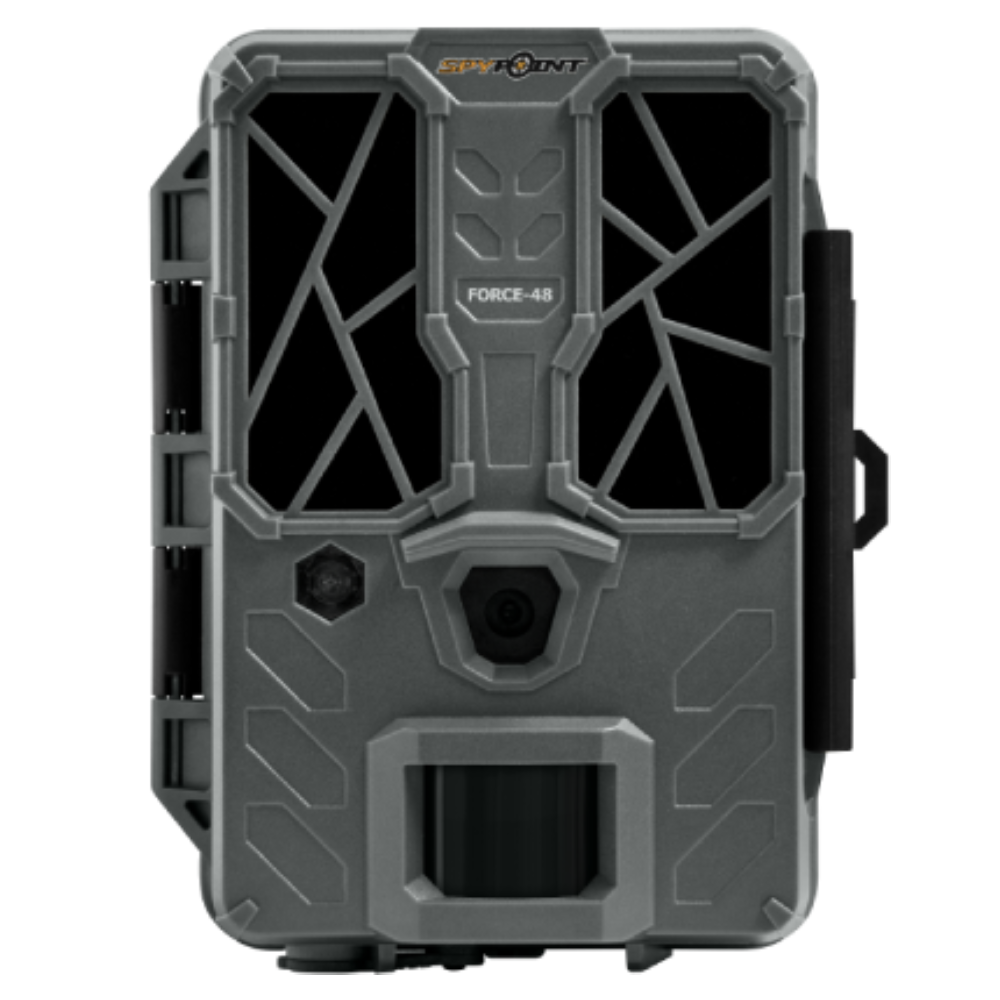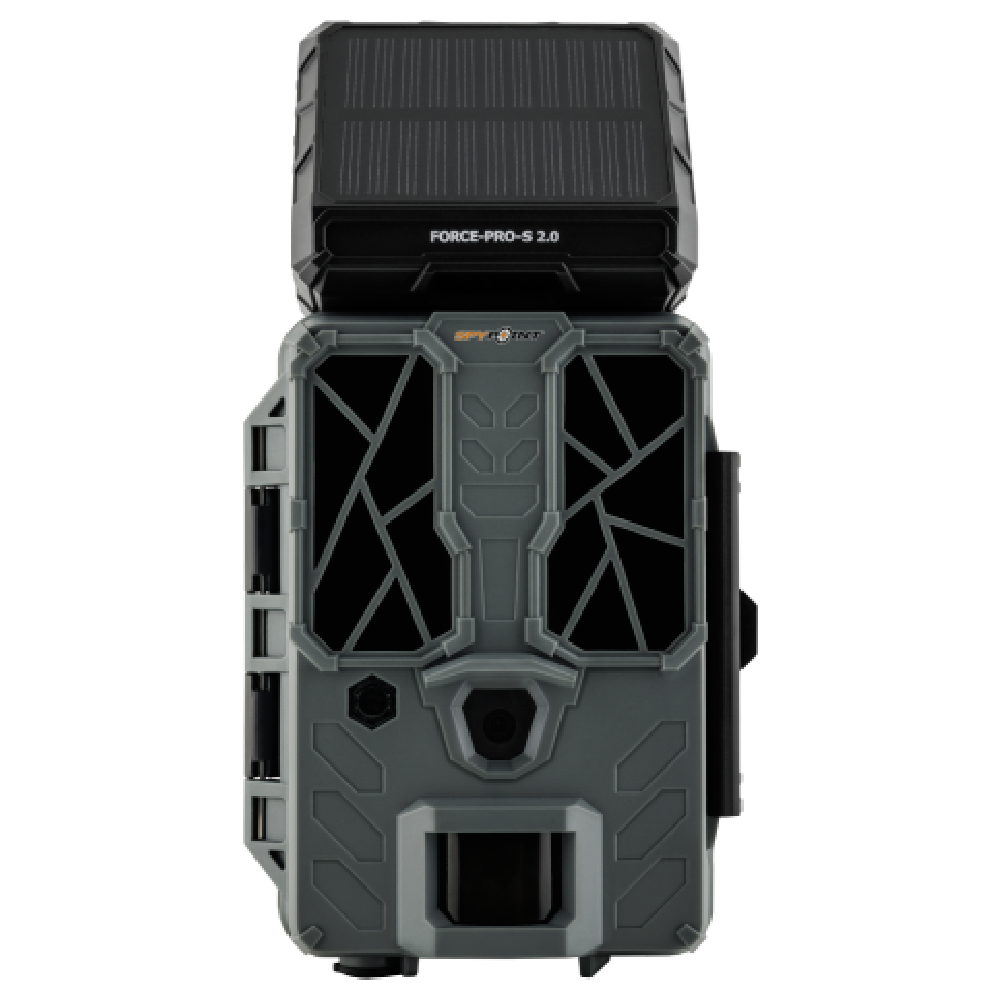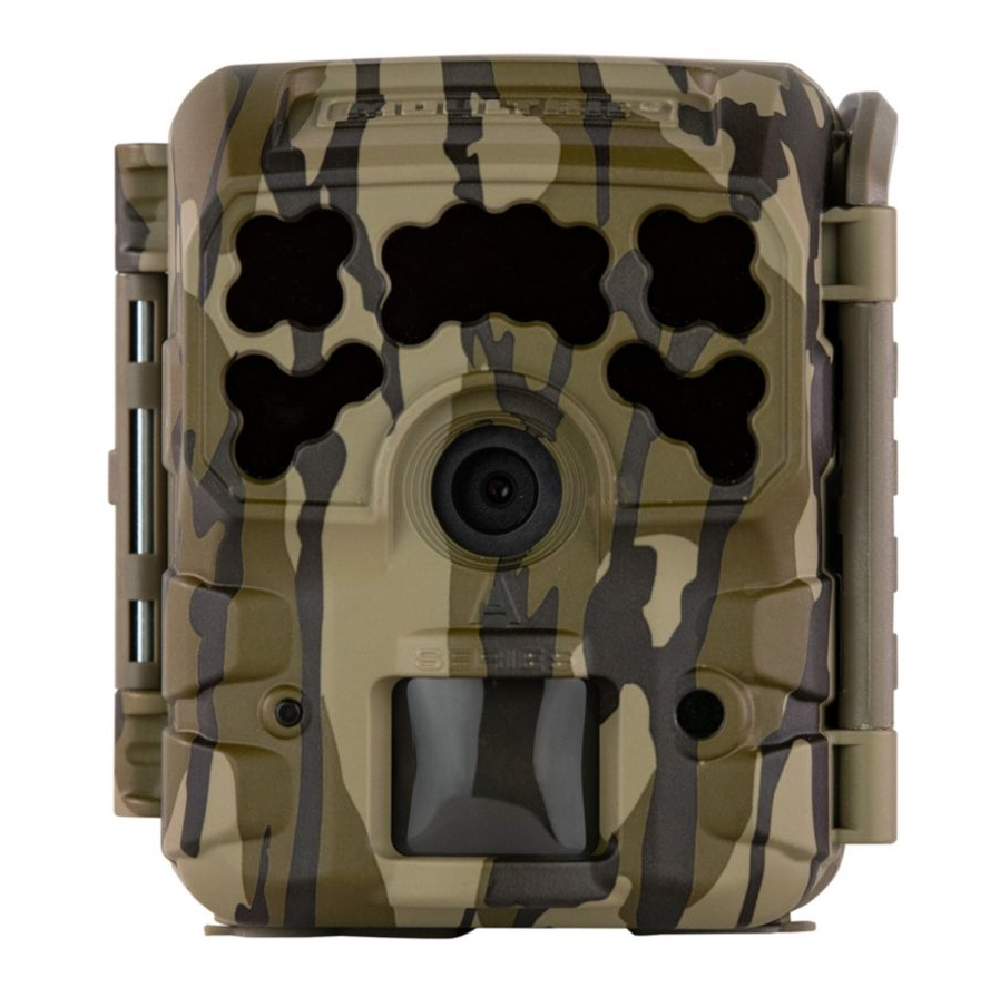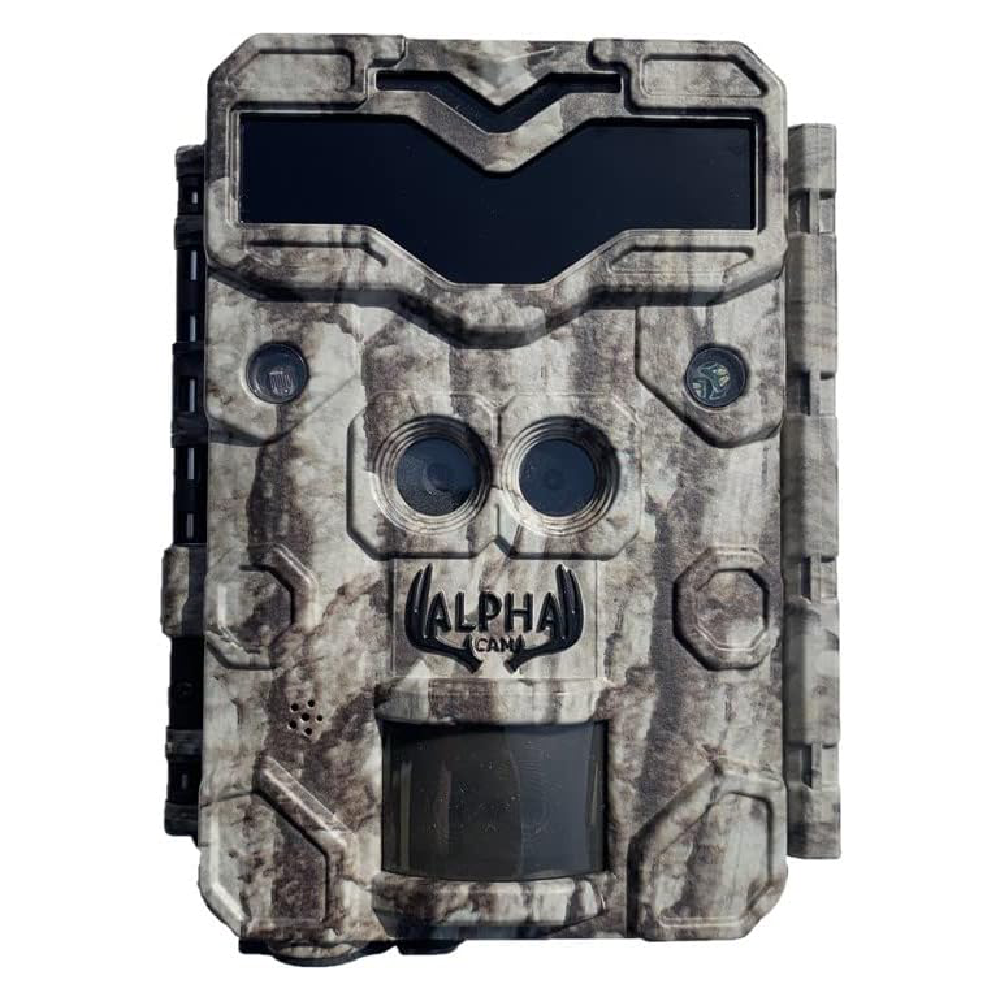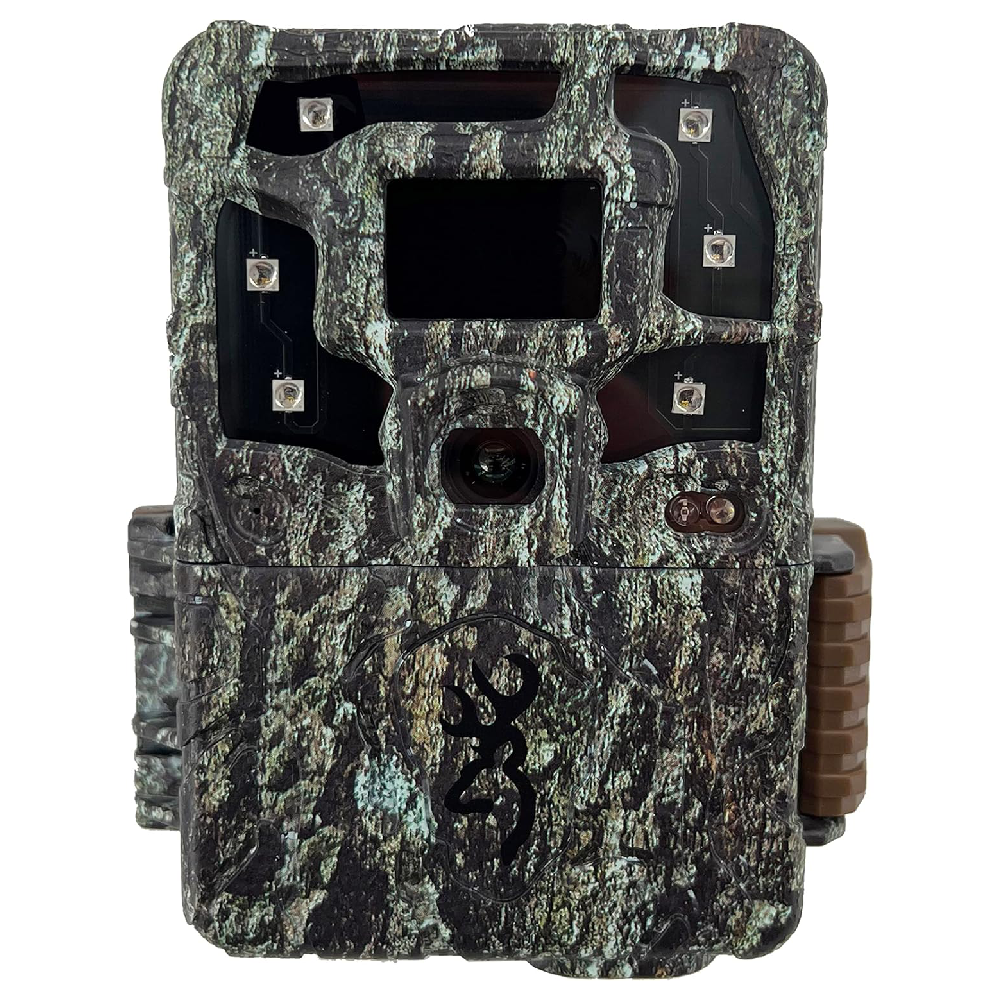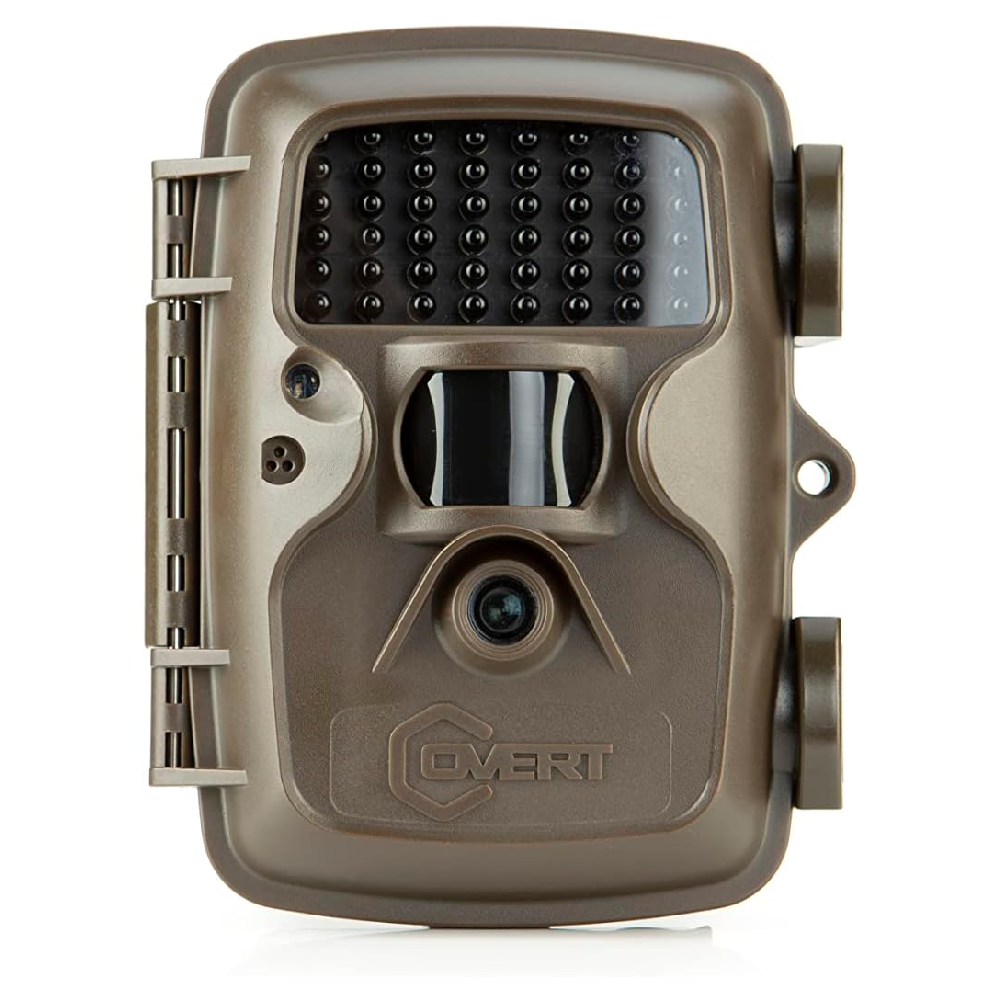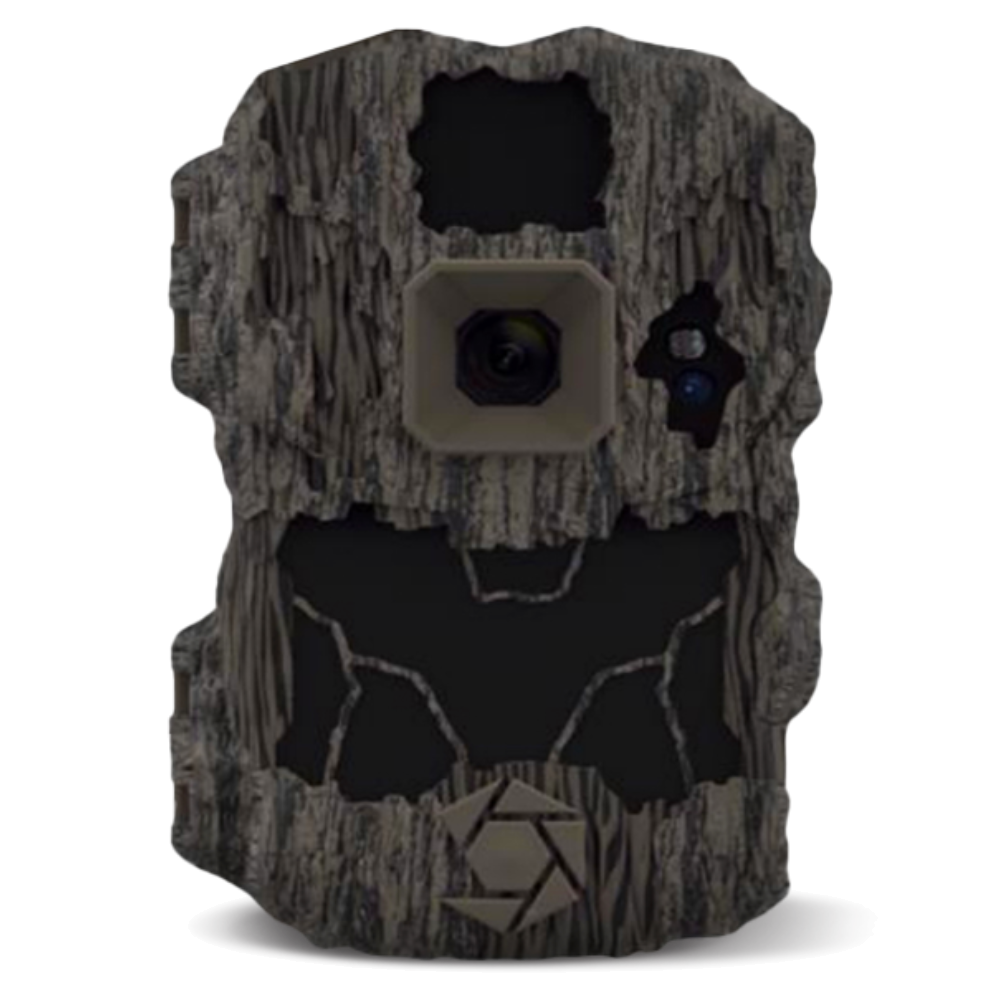We may earn revenue from the products available on this page and participate in affiliate programs. Learn more
First, let's be clear that this is a review of conventional, non-wireless trail cameras. If you’re done with SD cards and weekly visits to camera sites, then check out our recent test of the best cellular trail cams here. If you're not done with conventional cams, you are both in the right place and hardly alone.
Conventional trail cameras still have a solid place in our increasingly cell-cam world. Typically, they’re the go-to option for raw performance, with longer detection ranges, better image quality, and faster trigger speeds than most cell cams. They also work where there's no cell service and won’t give you the digital headaches of setting up a wireless unit.
We spent the past few months testing the best trail cameras to get you geared up for hunting season this year. One trend we noticed is that conventional cams are getting smaller and more capable. They’re also packed with smart features, like solar panels and dual lenses for better daytime and nighttime pics. If you need a camera to put in area with little or no service, or you just prefer the simplicity and affordability of running conventional cams, you’re sure to find something below that will work great for you—and maybe help put you on your next buck.
Best Overall: Browning Dark Ops DCL Nano
Best Value: Spypoint Force-48
Best Solar: Spypoint Force-Pro-S 2.0
Best Picture Quality: Reconyx Hyperfire 2
Best Mini Cam: Moultrie Micro-42i
Rest of the Best
Best Overall: Browning Dark Ops DCL Nano
Specs
Trigger speed: 0.15 seconds
Detection range: 100 feet
Power: 6 AA batteries
Pros
Long-range nighttime shots without flash
Fast trigger speed
Compact size
Cons
Python cable lock not as secure as some other designs
At around $180, the Dark Ops DCL Nano isn’t cheap compared to most conventional cams. But it’s worth the money. The camera is the perfect size and weight for taking just about anywhere. On the back of the unit, there is a built-in metal bracket that bites into tree bark nicely and a really nice on-board screen for getting the perfect shot. Best of all, with a great detection range both day and night, this camera is going to get just about any buck that walks by.
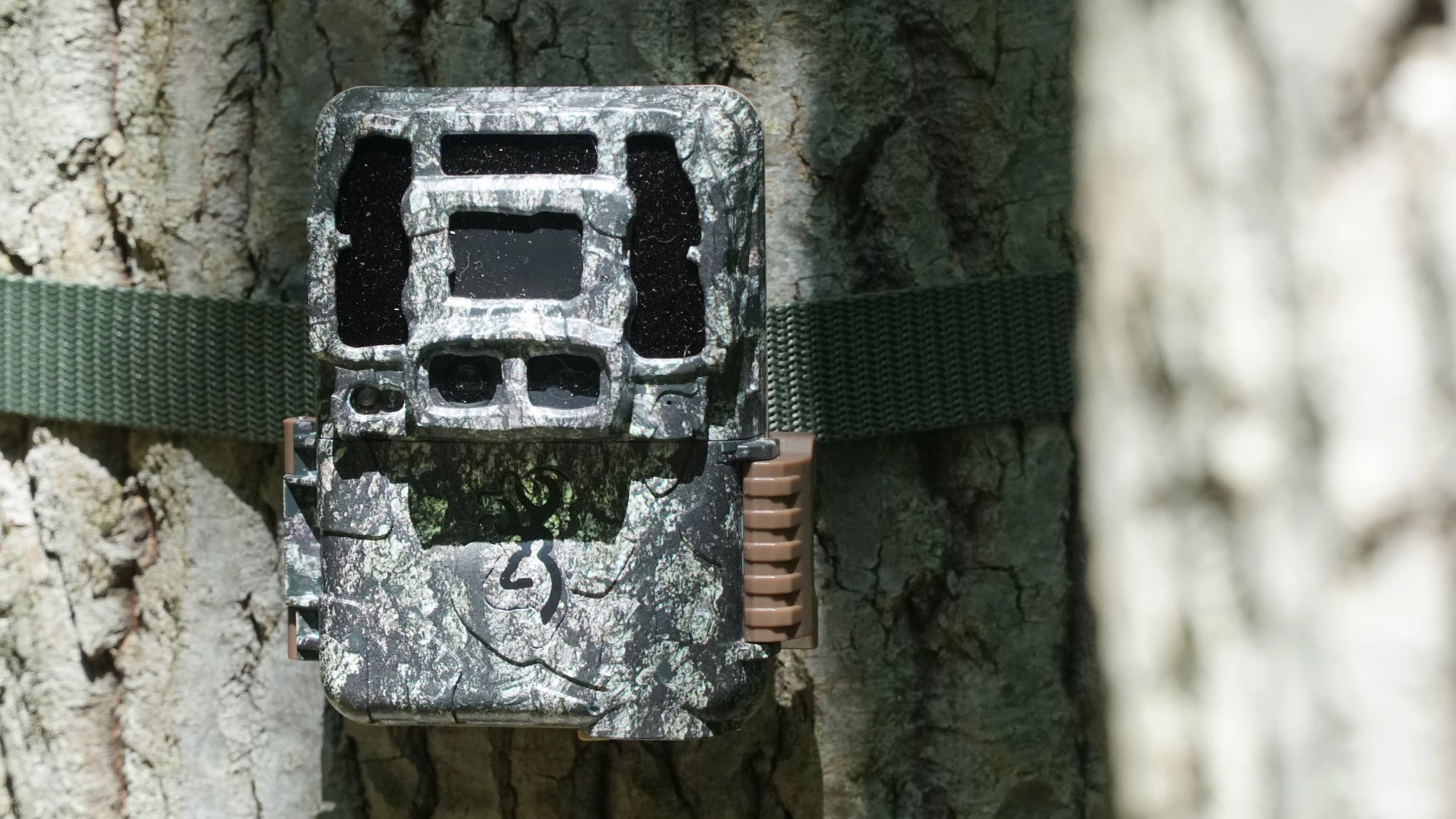
During the test, the Dark Ops Nano performed as advertised with razor-sharp nighttime photos. The camera actually has dedicated night and day lenses to optimize picture quality during both conditions, and they work very well. It also captures 4k video with sound, and the Nano has a super-fast 0.15-second trigger speed, which really shined on the walk-by test. For all of these reasons, it's our pick for the best overall conventional cam for 2024. If you're after top-end performance in a well-built non-cellular camera for remote areas without cell service, the Dark Ops Nano is a great choice.
Best Value: Spypoint Force-48
Specs
Trigger speed: 0.5 seconds
Detection range: 80 feet
Power: 8 AA batteries
Pros
Great price
Solid picture quality for the money
Easy setup
Cons
SD card not included
Below-average trigger speed
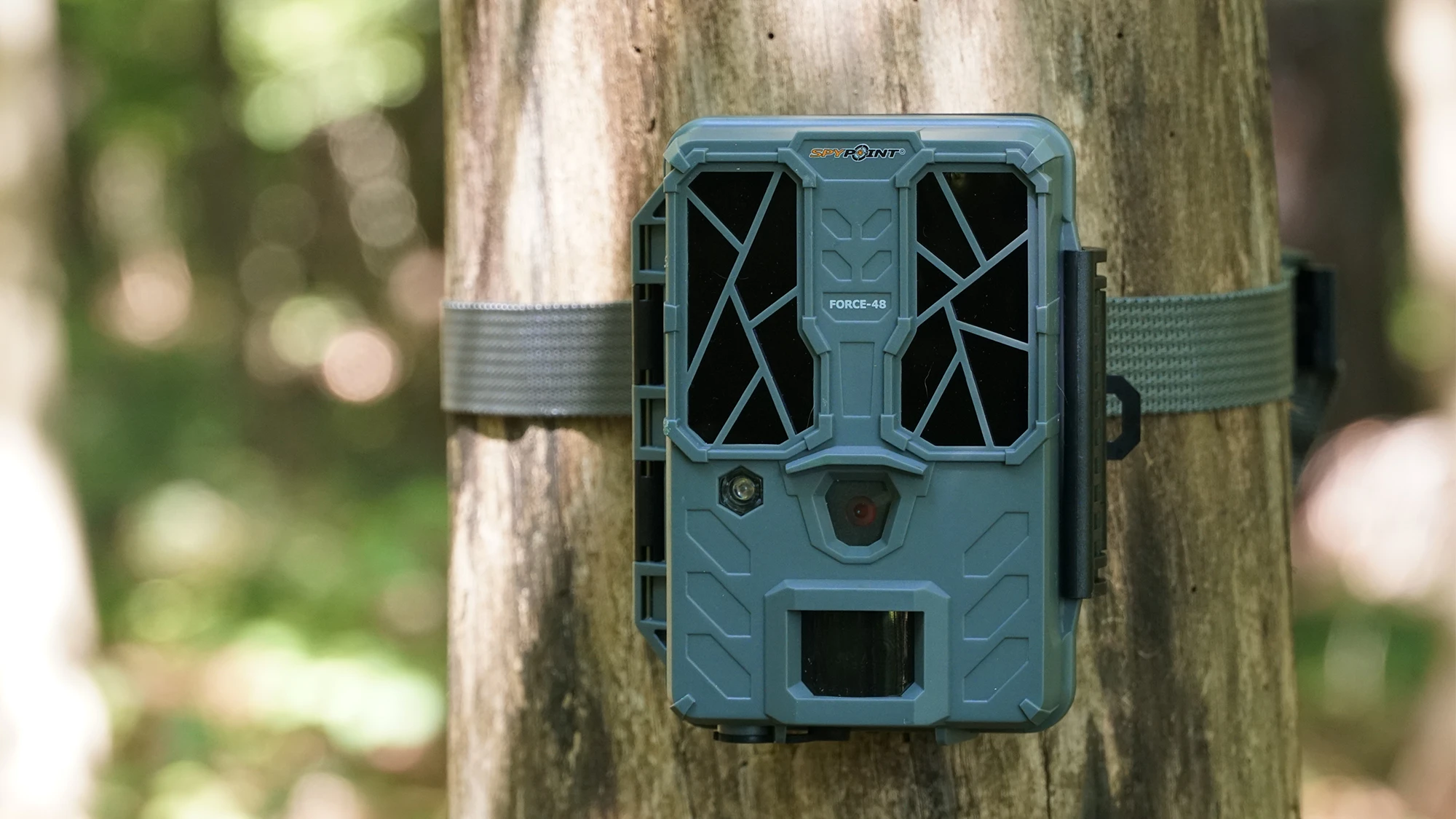
This year, Spypoint has dropped some seriously good deals across their trail-camera line. Their new Flex-M cellular camera comes in at just $80, and the new conventional-cam Force 48 is just $70. While the Force-48 is a pretty basic camera, it still has features hunters will appreciate, like an easy set-up screen and the ability to capture 720p video with sound. It’s the ideal camera for buying in bulk and setting on a few different points throughout a property.

Our only knock on the Force-48 is that it doesn’t come with an SD card, but at this price, that’s to be expected. It’s not a back idea to buy the card from Spypoint—that way you’ll be sure it's configured properly. During the test, we had a bit of trouble with this when running a SanDisk Ultra 64-GB card, but after switching to a Spypoint card, we experienced zero issues. The camera captures great images for the money, and though the 80-foot detection range and 0.5-second trigger speed are modest for a trail camera today, the Force-48 is still a solid, workhorse camera for the woods at a really great price.
Best Solar: Spypoint Force-Pro-S 2.0
Specs
Trigger speed: 0.2 second
Detection range: 110 feet
Power: 8 AA batteries, plus on-board solar
Pros
Solar panel
Time Lapse+ feature
Cons
Screen impossible to use for angling camera
The built-in solar panel is right away the best thing about the Force Pro-S 2.0. It gives you a serious boost in battery life, which is a big deal these days with how much quality AAs costs. But it is far from the only great thing about the Pro-S 2.0. The camera also has a huge screen, which makes set-up a breeze, and it can be programmed for Spypoint’s Time Lapse+, giving you the ability to capture images for set time intervals while still taking motion-activated images.

With the features above, the Force Pro-S 2.0 would make a fantastic camera for covering big ag fields that get plenty of sun. But it does equally well in the woods. During the test, it shot some of the best day and night images of deer at our feeder. And it performed as advertised during the walk-by test. It actually has the longest detection range of any Spypoint camera, and the longest in our test, and with the boost in battery life from the solar panel, it’s a economical, too.
Related: Best Cellular Trail Cameras of 2024
Best Picture Quality: Reconyx Hyperfire 2
Specs
Trigger speed: 0.2 seconds
Detection range: 85 feet
Power: 12 AA batteries
Pros
Super fast trigger
Outstanding picture quality
Good detection range
Solid case construction
Cons
Expensive
Requires a lot of batteries
It’s easy to run out of superlatives when it comes to Reconyx cameras; they just take exceptionally beautiful pictures and miss almost nothing that walks past them. They’re super-easy to program, and the camera case is tough and solid and watertight. Plus, in a world jammed with cheap electronics that fail early and often, the company offers a five-year warranty.

The obvious downside is that you could by three or four other cameras for the same price as this one. But other than the near-$400 price tag and the fact that it runs on 12 batteries, the Hyperfire 2 has everything you want in a conventional camera, including an easy setup, super-fast trigger, and great detection zone. What really set it apart, though—and the reason lots of hunter are willing to pay so much—are the photos. If picture quality is your number-one priority because you want to see every sticker and fork and burr on every rack, then this is the camera to have. If I didn’t have to take out a loan to accomplish it, I’d own a closet full of these babies.
Best Mini Cam: Moultrie Micro-42i
Specs
Trigger speed: .04 seconds
Detection range: 70 feet
Power: 4 AA batteries
Pros
Small physical size
Excellent price
Solid pics and video
Easy setup
Cons
Slower trigger speed
Ho-hum detection range
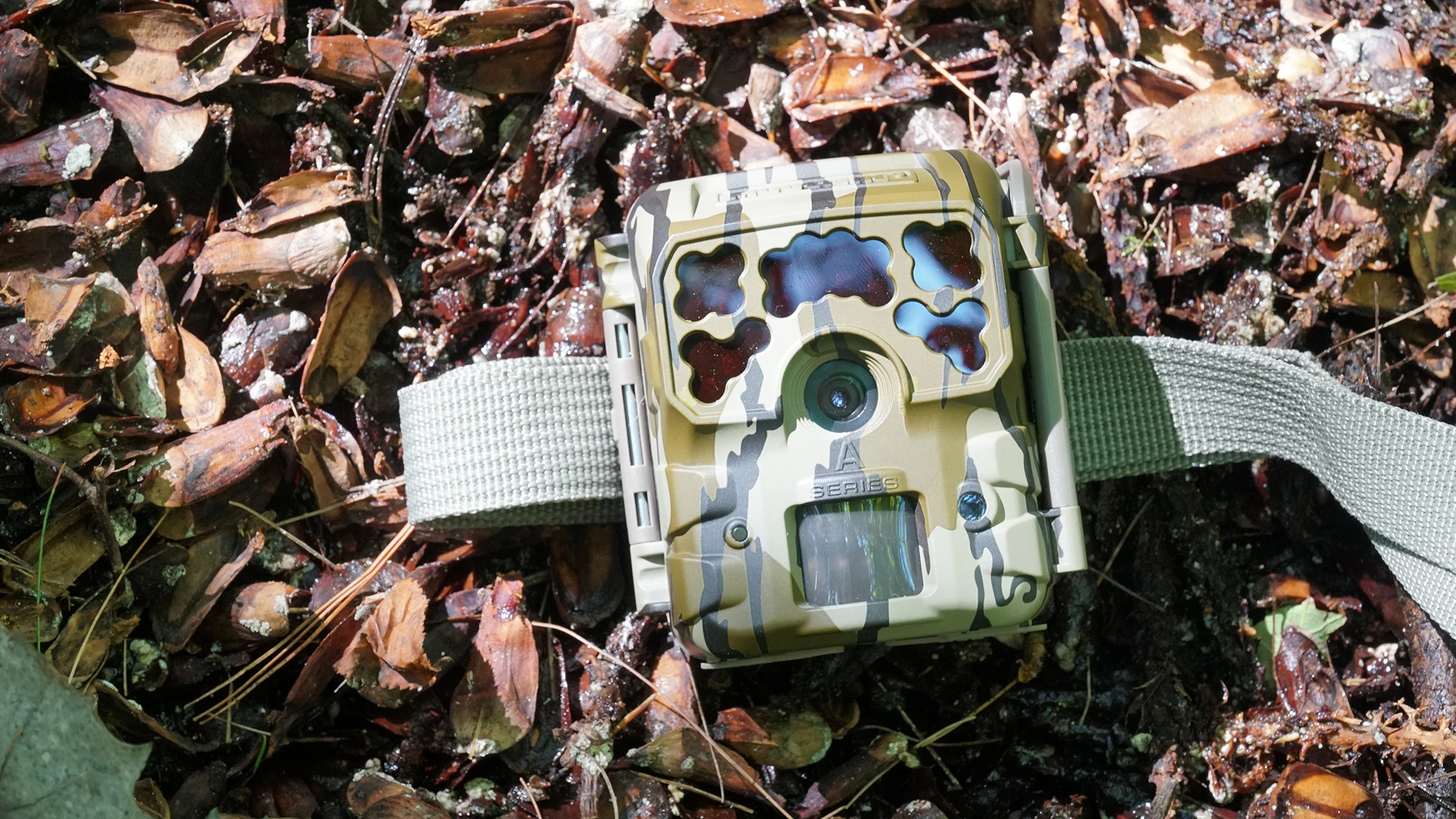
This camera literally fit in the palm of my hand, which makes it the perfect choice for hanging on a skinny sapling, or in a spot where you’re targeting a paranoid buck, or a setup where you’re trying to nab a trespasser or thief. It’s also just nice to have a cam that doesn’t take up much room in your pack.
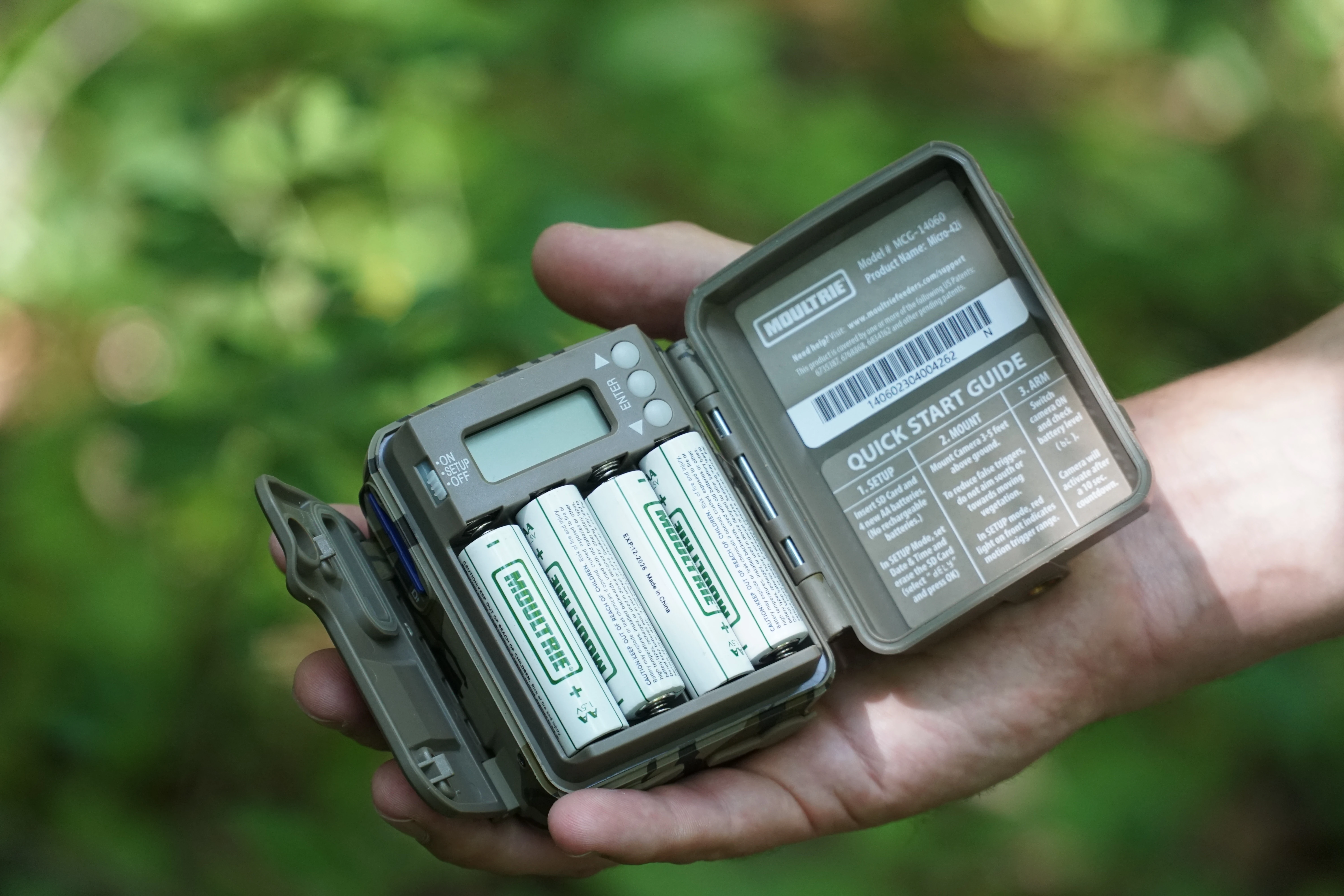
This mighty mite shoots perfectly fine pics and videos. You may not get the high-end performance of a Reconyx or Browning, but then again, you’re getting a perfectly fine and very handy unit for a fraction of the cost. In a further nod to economy, four AA batteries are included with the kit (did I mention batteries are expensive?), and I enjoyed the incredibly easy setup functions of this camera. In the end, if you’re looking for a bargain and like an extra-small camera, this is the one for you.
More Trail Cameras We Tested
Alpha Cam Dual Lens 4K
Specs
Trigger speed: 0.2 seconds
Detection range: 80 feet
Power: 8 AA batteries
Pros
Super quick trigger
Solid case design
Good nighttime pics
Easy programming
Cons
I found the SD card a little clumsy to get at
When this camera hit the market last year, I gave it an award for Best Newcomer. The big viewing screen (over 2 inches) was crystal clear and made programming the camera a snap; I only read the instructions as a formality, as instructions on the screen basically led me through it. Picture quality was perfectly fine; it may be a half a step below the browning in this regard, but so is it’s price tag. The trigger on the Alpha, however, can compete with the very best on the market, and the detection range is solid too. I haven’t used the camera long enough to judge battery life, but if it’s solid, this will be one of the best conventional cams out there, and a solid value too.
Browning Strike Force Pro X 1080
Specs
Trigger speed: 0.2 seconds
Detection range: 90 feet
Power: 6 AA batteries
Pros
Super-fast trigger
Good pic and video quality
Excellent mounting bracket
Cons
Sticky battery tray
Smaller viewing screen
Sometimes it’s the little things that make a big difference, and the Strike Force, like most Browning cameras, has a small feature that is a stroke of genius: a metal mounting bracket that allows the camera to be tipped at an angle. If, like me, you’ve jammed hundred of sticks behind trail cameras to get it to sit right on a tree, you’ll really appreciate this feature. But that’s far from the only thing that stands out with this camera.
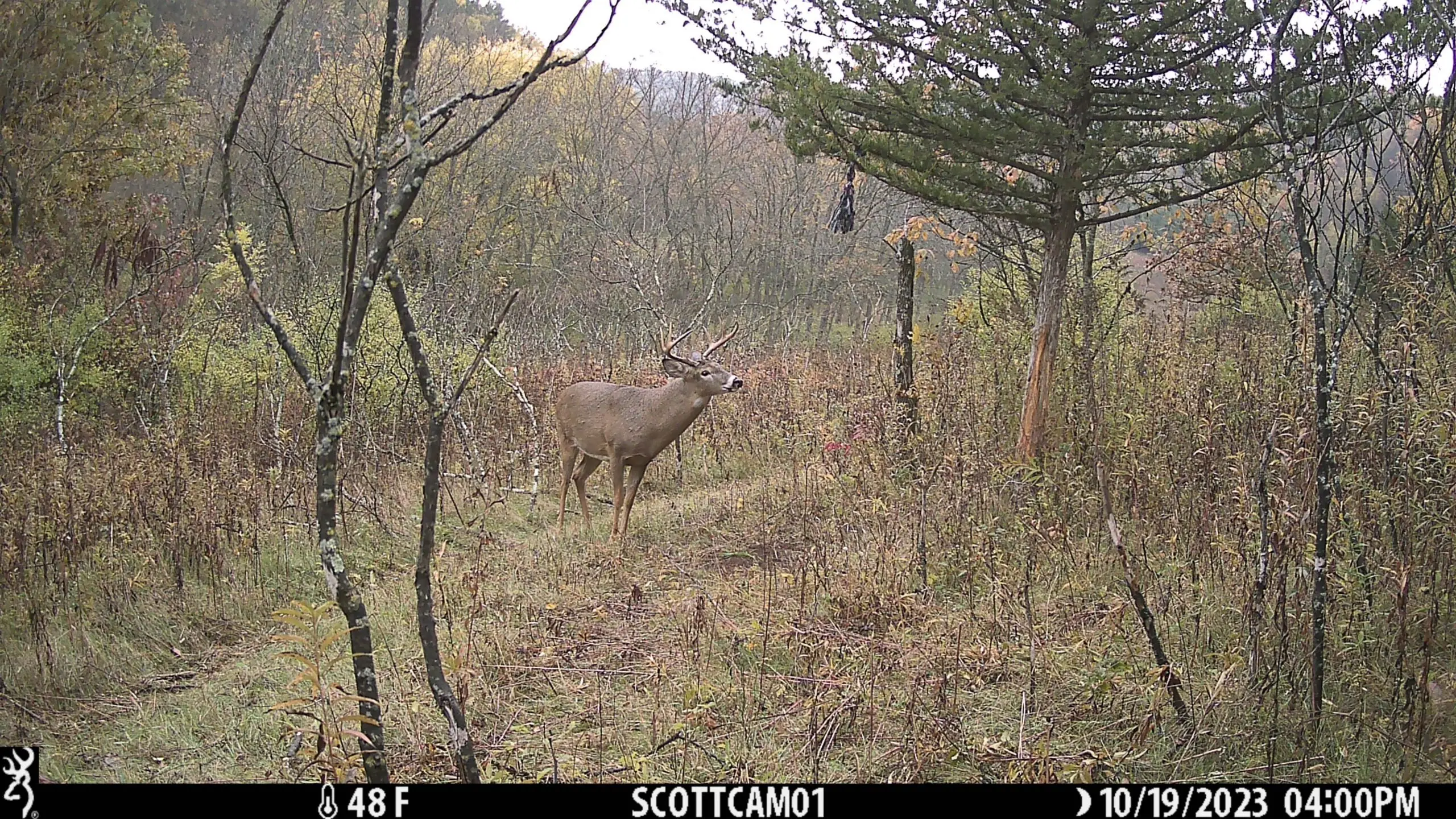
The Strike Force Pro X 1080 simply does everything well. It sports Browning’s typically-zippy trigger and a great detection range, which, in combination, means the camera doesn’t miss much of anything. Picture quality is very good and video quality is solid, too. If the battery life on this model is anything like the many Browning’s I’ve tested—and there’s no reason to think it will by any different—the Strike Force will be one of my go-to conventional cameras this year.
Covert MP30
Specs
Trigger speed: 0.25 seconds
Detection range: 80 feet
Power: 8 AA batteries
Pros
Unbelievable price
Solid speed and detection range
Good daylight pics
Cons
Confusing to program
I’m a firm believer that the best way to scout the most effectively with trail cams is to have a pile of them out there, working their butts off for you. So it’s a numbers game, and that can get spendy. On the other hand, cheap cameras that don’t work well are more trouble than they are worth. So, you need a camera that walks the budget vs. performance tightrope like a circus star. Covert’s MP30 exactly that kind of camera. In fact, after years of testing cameras of all sorts, I’d say that the MP30 is about as good as a budget camera comes.
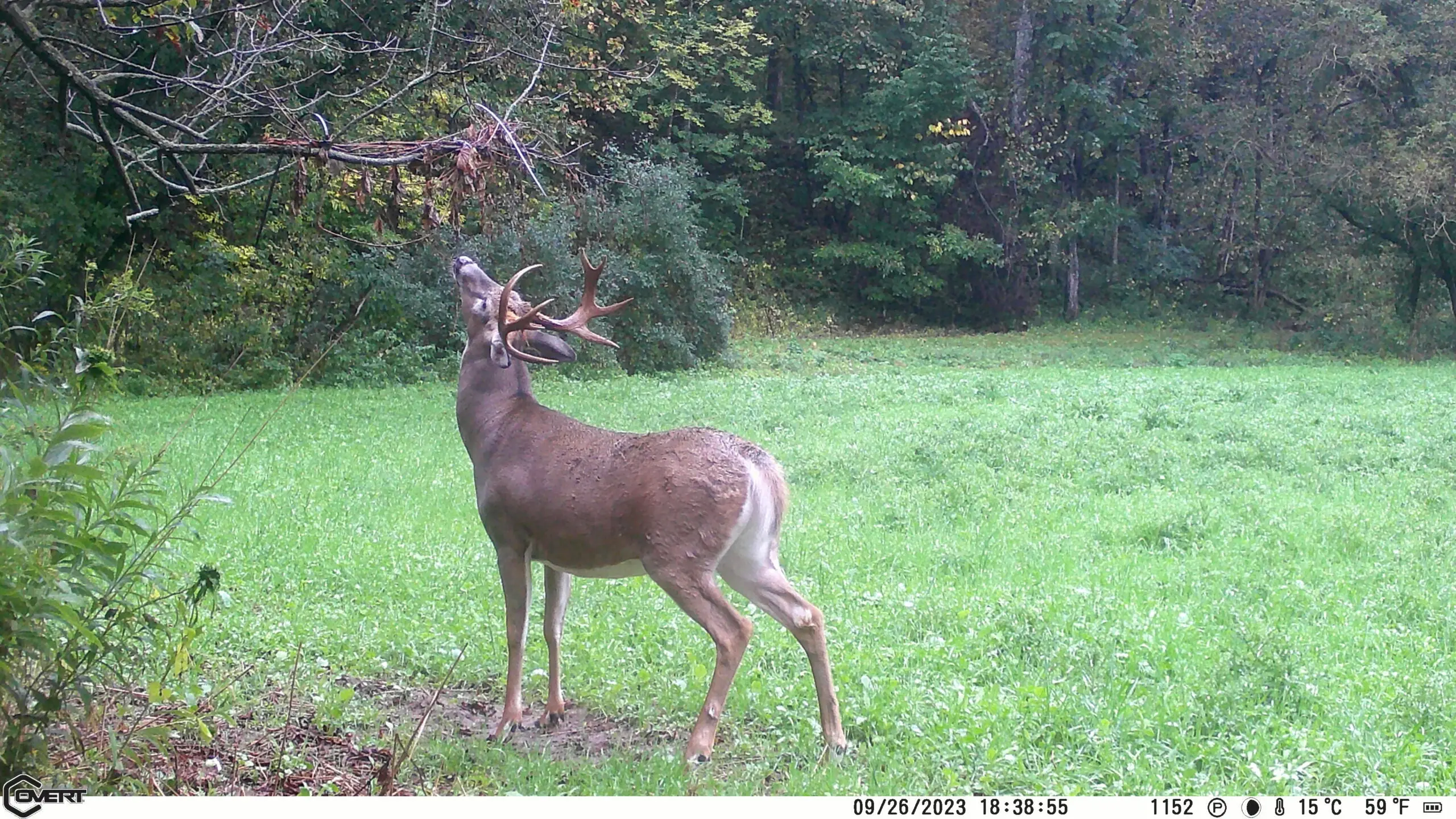
I had to scratch my head a bit on the setup, but that was a small price to pay for an $80 cam that has a fast trigger, a good detection range, and shoots great pics, which is why it was our Best Value winner last for new-for-2023 cams.
Stealth Cam DS4K MAX Infrared
Specs
Trigger Speed: 0.2 seconds
Detection Range: 100 feet
Power: 12 AA batteries
Pros
Records 4K in daytime
Integrated Python lock latch
Burst mode included
Cons
Only 1-year warranty
Stealth Cam gave their popular DS4K MAX a facelift a couple year back, and while not new for 2024, the updated version remains available and an excellent camera for the price. Many of the features that hunters liked so much about the original, like 4K video and a 100-foot flash detection range, are back, but now users can enjoy the benefits of a 32-megapixel sensor. As I noted early, megapixel ratings don’t always mean much, but the quality of my test-camera images don’t lie—many of which showed enough detail not just to count tines but also the number of whiskers on a deer’s nose.
The DS4K MAX is fitted with 42 No Glo IR flash emitters, and the technology-challenged crowd will appreciate the camera’s Quick-Set pre-programmed mode. Numerous custom modes are offered, and burst modes can be set to snap between one and nine images. This trail camera runs on 12 AA batteries, and it also has an external power jack for a 12-volt battery box.
How We Tested Trail Cameras
When the test cameras arrived, we installed batteries, put in an SD card, and set each one up in my yard to evaluate trigger speed, picture and video quality, and detection range by walking in front of them at pre-measured distances, day and night, the looking at the photos. I also deployed cams on several mock scrapes and on a deer feeding to check their performance on wild deer. The results that follow were derived from the following set of criteria:
Ease of Setup: Compared to their wireless cousins, conventional cams are typically a snap to set up and get running. Still, navigating the menu to program the camera needs to be pretty seamless and easy to understand. We followed the manufacturer’s instructions to get the camera programmed and then judged each camera on how easily this process went.
Picture Quality: This can be tied into cost (as in, the more you spend, the better the pics), but not always. While we included the company’s megapixel rating in each camera’s description, it’s important to not be misled by this number, as it’s one of the most misunderstood features of trail cams. Manufacturers can exaggerate MP ratings through a process known as interpolation, which digitally adds megapixels to a photo without actually improving the picture. In other words, a 30 MP camera may not have any clearer or better pics than a 3 MP camera. So yeah, the best way to judge the quality of a camera’s pics is to simply look at the images.
Trigger Speed: Basically defined as how long it takes the camera to snap a pic (or start shooting video) from when it detects movement. Generally speaking, the faster the better. One-fourth of a second (0.25) is about as good as it gets, and a half-second is respectable for most camera setups. Anything much slower than that is decidedly ho-hum, and the camera better be darn good at something else to do well in this test.
Detection Range: The maximum distance at which a camera will “sense” an object (hopefully a critter, but weeds and tree branches will do; something to keep in mind when setting cameras up) and trip the tigger. Again, as a rule, the greater the distance the better, as the camera will get more pics of more animals.
Why Trust Us
For more than 125 years, Field & Stream has been providing readers with honest and authentic coverage of outdoor gear. Our writers and editors eat, sleep, and breathe the outdoors, and that passion comes through in our product reviews. You can count on F&S to keep you up to date on the best new gear. And when we write about a product—whether it’s a bass lure or a backpack—we cover the good and the bad, so you know exactly what to expect before you decide to make a purchase.


